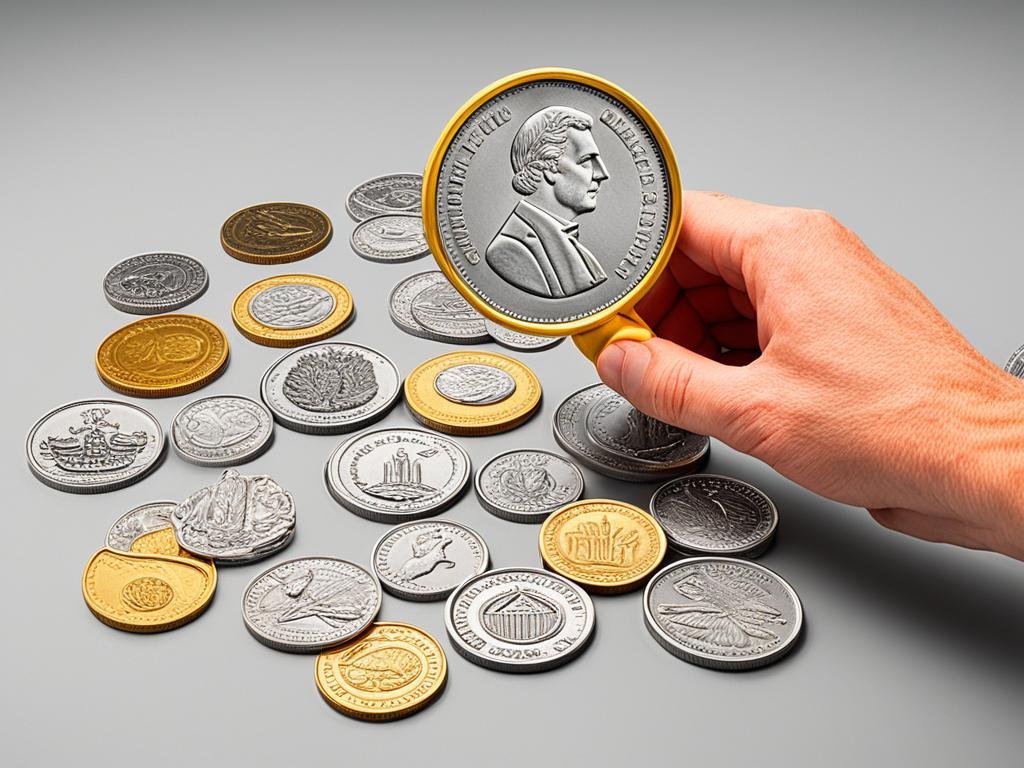
Welcome to Devil n Dove, where we invite you to dive into the captivating world of jewelry making and crafts. Our mission is to inspire and empower you to unleash your creativity, learning and growing with each project. From the first sketch to the final piece, we are committed to creating a community of passionate makers who celebrate the art of craftsmanship.
At Devil n Dove, we specialize in the intricate process of wax modeling for casting, a technique that has been used for centuries to bring beautiful metal objects to life. Our expertise lies in the delicate art of sculpting and shaping wax, preparing it for the casting process, and transforming it into unique and meaningful creations.
With our detailed guidance, you will learn the various wax modeling techniques, from carving and molding to texturing and hollowing. We will take you on a step-by-step journey through the wax casting process, highlighting the importance of wax sculpting methods and the preparation of casting wax. We will share tips and tricks that we have honed over years of experience, allowing you to create stunning pieces with precision and finesse.
Each creation at Devil n Dove tells a story. Our jewelry and crafted objects are an embodiment of passion, dedication, and artistry. Whether you are a beginner or an experienced maker, our adventure awaits you. Subscribe and hit notifications to embark on a world of inspiration, where every project is an opportunity for growth and self-expression.
Support us at www.devilndove.com or visit our store at www.devilndove.online and become a part of our creative community today.
Key Takeaways:
- Learn the art of wax modeling for casting to create unique metal objects.
- Discover various wax modeling techniques, from carving to molding.
- Understand the process of preparing wax for casting.
- Unleash your creativity by exploring different sculpting methods.
- Join our community for inspiration and growth in the world of craftsmanship.
What is Lost Wax Casting?
Lost wax casting, also known as investment casting, is an ancient method used to create metal objects with intricate details. This process involves building a mold around a wax model, which is then removed or “lost” when molten metal is poured into the mold cavity. The result is a precise replication of the wax model in metal, capturing even the finest details.
Lost wax casting has been practiced for thousands of years, dating back to 3000 B.C. This technique has been used across various industries, including manufacturing and fine art. It offers the ability to produce parts with thin walls, delicate features, and close tolerances.
The process begins by creating a wax model, which serves as the foundation for the final metal object. Skilled artisans shape the wax model using texturing tools and techniques, ensuring every detail is accurately represented. If necessary, the wax model can also be hollowed out to achieve specific design requirements or minimize the amount of metal used.
The wax model is then used to create a mold. A mixture of plaster and silica is poured over the wax model, forming a negative cavity that perfectly mirrors the original model’s shape. This mold captures the intricate details of the wax model and will ultimately define the final metal object.
Lost wax casting offers unparalleled versatility and precision, making it a popular choice for creating jewelry, sculptures, and custom metal components. Whether it’s capturing the delicate petals of a flower or the ornate patterns of an ancient artifact, this method allows artisans to bring their visions to life.
Creating the Mold and Preparing the Wax Model
Once we have completed the intricate process of sculpting the wax model, the next crucial step in the lost wax casting journey is creating the mold. To achieve this, we harness the power of plaster and silica, combining them with water to form a mold that will perfectly capture the essence of our wax model.
Firstly, we mix equal parts of plaster, silica, and water to create an optimal consistency for our mold-making material. This carefully calculated blend ensures a smooth and precise mold that will accurately replicate the wax model’s shape and details.
With our mold-making material mixed and ready, we pour it over the wax model. The mold envelops the model, encasing it in a protective layer. As the material sets and hardens, the mold becomes a negative cavity with the exact shape and dimensions of the original model.
To establish pathways for the molten metal to flow into the mold, we incorporate sprues within the wax pattern. These sprues are like branches on a tree, strategically attached to the wax copies. They create channels through which the molten metal will travel, ensuring a steady and uniform casting process.
Once the sprues are added, the wax patterns are then attached to a sprue base or button. This assembly forms a complete network that guides the molten metal into the mold cavity, allowing for the precise replication of the wax model’s form.
Advantages of Creating a Mold
“Constructing a mold is an essential step in the lost wax casting process as it guarantees the reproduction of the wax model’s intricate details and contours in the final metal object. With a well-crafted mold, we can confidently proceed to the next stage and bring our artistic vision to life.”
Now that the mold is prepared and our wax model is secured within its negative cavity, we are ready to move forward and embark on the casting process. Stay with us as we delve into the fascinating realm of transforming molten metal into tangible works of art.
The Casting Process
Once the wax model has been created and the mold is prepared, we move on to the exciting process of casting the metal. This step involves carefully selecting the appropriate metallic alloy for the desired result. Different alloys have varying melting temperatures, so it’s crucial to choose the right one for a successful casting.
After choosing the metallic alloy, it is melted in a crucible until it reaches the required temperature. It is crucial to handle the molten metal with utmost care and follow safety precautions to ensure a safe working environment. This includes wearing protective clothing, such as heat-resistant gloves and goggles, and working in a well-ventilated space to avoid exposure to harmful fumes.
Once the molten metal has reached the proper temperature, it is poured into the mold cavity. The pouring process requires precision and control to ensure that the metal flows smoothly into all the intricate details of the wax model. This ensures a high-quality cast with accurate replication of the original design.
After pouring, the mold is left undisturbed to allow the molten metal to solidify completely. This can take some time, depending on the size and complexity of the casting, as well as the specific alloy used. It’s important to exercise patience during this phase to avoid any potential defects or imperfections in the final piece.
Table:
| Metallic Alloy | Melting Temperature |
|---|---|
| Gold | 1,064°C |
| Silver | 961°C |
| Bronze | 950-1,040°C |
Choosing the right metallic alloy, handling the molten metal safely, and ensuring a smooth pouring process are integral to the success of the casting phase. The proper execution of these steps sets the foundation for producing high-quality metal objects with fine details and precise replication of the wax model.
Removing the Cast from the Mold and Finishing
Once the metal has cooled and solidified, we move on to the next step: removing the cast from the mold and giving it a finishing touch. This process, known as devesting, involves separating the metal piece from the mold to reveal the final result of the casting.
There are different methods for devesting, depending on the type of mold and the desired outcome. One common approach is to quench the mold in water, which helps to quickly cool and solidify the metal, making it easier to release. Another method is to break the mold, carefully removing it piece by piece to avoid damaging the casted part. Whichever technique we choose, it is crucial to handle the cast with care to prevent any deformities or fractures.
Once the cast is free from the mold, we can begin the finishing process. This step involves removing any remaining sprues or gating systems that were used during the casting. These discarded pieces can be recycled and used again for future casts, reducing waste and optimizing resources.
After removing the sprues, we move on to refining the casted part. Filing techniques are used to smooth out any rough edges or imperfections on the surface. This process requires patience and precision, as we aim to create a flawless result. Utilizing various filing tools, such as rasps, files, and sandpaper, we carefully shape the cast, ensuring it matches the original design and intended specifications.
Once the filing is complete, it’s time to move on to polishing. This step involves using abrasive materials, such as polishing compounds or sandpapers with finer grits, to refine the surface even further. With each successive polish, the casted part becomes smoother and more lustrous, highlighting its intricate details and enhancing its overall appearance.
To add the final touches and achieve the desired aesthetic, we can apply various finishing techniques. One popular option is to apply a patina or coating to the cast, giving it a unique color or texture. This technique can create a vintage, aged look or add vibrant hues to the metal. Other finishing techniques include buffing, burnishing, or electroplating, depending on the desired effect and material used.
Finishing Techniques for Wax Castings
| Technique | Description |
|---|---|
| Patina | Applying chemicals or heat to create a desired color or texture on the surface of the casted piece. |
| Buffing | Using a rotating wheel with an abrasive compound to produce a smooth, reflective surface on the cast. |
| Burnishing | Using a hard tool to compress and smooth the surface of the cast, creating a high shine. |
| Electroplating | Applying a layer of metal onto the cast through an electrolytic process, enhancing its appearance and durability. |
By employing these devesting, filing, polishing, and finishing techniques, we transform a raw cast into a refined and visually appealing metal piece. Each step requires skill, precision, and attention to detail to achieve the desired result. With practice and experimentation, we can master these techniques and bring our creative visions to life.
Conclusion
Wax modeling for casting is a fascinating and versatile process that allows for the creation of unique and detailed metal objects. Whether you are a hobbyist or a professional, learning the techniques and tips for creating a wax model can open up a world of creative possibilities.
By following the steps outlined in this guide and experimenting with different materials and techniques, you can become proficient in the art of wax modeling for casting. Remember to always prioritize safety and have fun exploring this ancient and captivating craft.
FAQ
What is lost wax casting?
Lost wax casting, also known as investment casting, is a highly versatile process used to create metal objects from a wax model. It has been used for over 6,000 years in various industries, including manufacturing and fine art. The process involves building a mold around a sacrificial wax model, melting out the wax, and pouring molten metal into the mold cavity.
How do I create a wax model for casting?
To create a wax model for casting, you will need to shape and sculpt the wax using various techniques and tools. This includes texturing the surface, hollowing out the model if necessary, and attaching sprues to create a tree-like structure. The wax model will then serve as the basis for creating the mold and ultimately the metal object.
What materials are used to create the mold?
The mold for lost wax casting is typically made using a combination of plaster and silica. Equal parts of plaster, silica, and water are mixed to create a mold material that can be poured over the wax model. Once the mold is set, the wax is removed, leaving a negative cavity in the shape of the model. This cavity is then filled with molten metal to create the final casted object.
What safety precautions should I take when working with molten metal?
When working with molten metal, it is important to prioritize safety. This includes wearing protective clothing, such as heat-resistant gloves and goggles, to prevent burns and injuries. It is also crucial to work in a well-ventilated area to avoid inhaling fumes. Additionally, make sure to follow proper handling and pouring techniques to minimize the risk of accidents.
How do I remove the cast from the mold and finish it?
After the metal has cooled and solidified, the casted part needs to be removed from the mold through a process called devesting. This may involve quenching the mold in water to facilitate the removal or breaking the mold to release the casted part. Once the part is removed, any remaining sprues are cut off and recycled. The casted part is then cleaned up by filing, polishing, and applying additional finishes, such as a patina, to enhance its appearance.
Source Links
RELATED POSTS
View all



